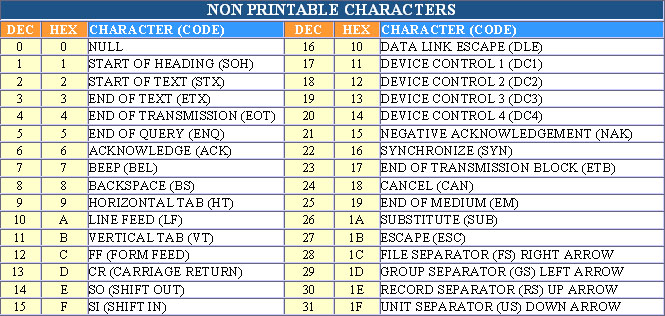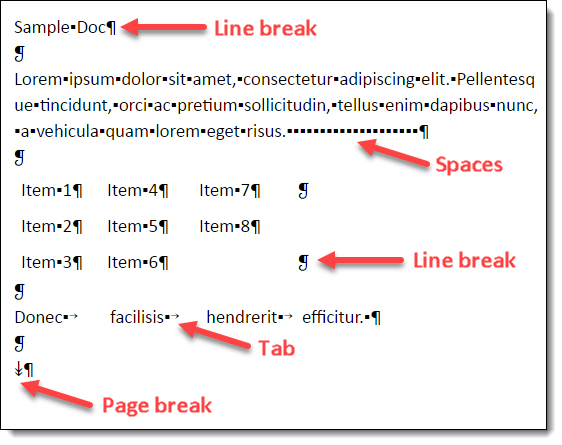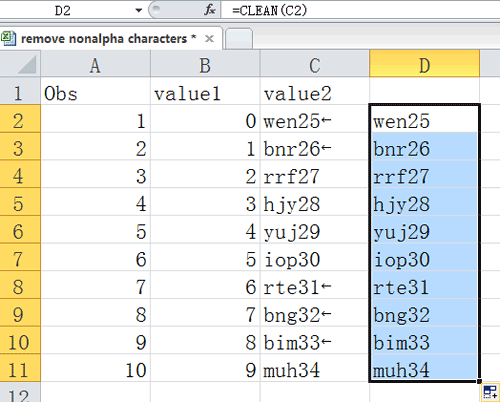In today’s digital age, we often come across various types of data on the internet. It could be in the form of images, documents, or even text. Sometimes, we encounter non-printable characters that might seem unusual or unfamiliar to us. These characters are not visible when printed but are present in the digital representation of the content.
Understanding Non-Printable Characters
Non-printable characters are those that cannot be displayed or printed in a visible form. They do not have a direct corresponding symbol or image associated with them. Instead, they serve specific purposes in digital systems, such as controlling the formatting or behavior of text.
One example of non-printable characters is the ASCII (American Standard Code for Information Interchange) character set. ASCII characters range from 0 to 127 and include symbols, control characters, and various other character types. Some of these characters are not normally visible or printable, but they have significant functionalities in computing systems.
 Dealing with Non-Printable Characters in Programming
Dealing with Non-Printable Characters in Programming
When working with programming languages, it is essential to handle non-printable characters properly. Some programming languages provide built-in functions or methods to detect, replace, or remove these characters from a given string.
For example, in C#, you can use the string class’s methods to handle non-printable characters. The Char.IsControl method allows you to check whether a specific character is a control character (non-printable). You can then perform any desired action based on the result.
 Similarly, in Java, you can use regular expressions or built-in functions like
Similarly, in Java, you can use regular expressions or built-in functions like isISOControl to identify non-printable characters and handle them accordingly.
 Viewing Non-Printable Characters
Viewing Non-Printable Characters
When working with text documents or content, it can be helpful to visualize non-printable characters to understand their presence and impact. Tools such as Wireshark, Google Docs, or specialized text editors allow you to display these characters.
Wireshark, a popular network protocol analyzer, offers a setting to display non-printable characters. This feature can be especially useful when analyzing network packets or examining the content of specific data streams.
 Similarly, in Google Docs, you can enable an option to show non-printing characters. It helps to identify hidden characters or formatting elements that may affect the document’s structure or appearance.
Similarly, in Google Docs, you can enable an option to show non-printing characters. It helps to identify hidden characters or formatting elements that may affect the document’s structure or appearance.
 Practical Use of Non-Printable Characters
Practical Use of Non-Printable Characters
Non-printable characters have practical applications in various domains. They play a crucial role in data transmission, data storage, and even in ensuring data integrity and security.
For example, non-printable characters can be used as delimiter characters in data formats such as CSV (Comma-Separated Values) or TSV (Tab-Separated Values). These delimiters help separate and organize data fields.
 In addition, non-printable characters are often used in encryption algorithms. By introducing such characters, encryption methods can enhance the security of sensitive information and make it harder for unauthorized individuals to decipher the data.
In addition, non-printable characters are often used in encryption algorithms. By introducing such characters, encryption methods can enhance the security of sensitive information and make it harder for unauthorized individuals to decipher the data.
It is worth noting that non-printable characters are not limited to ASCII characters; they exist in other character encoding systems like Unicode as well. Each encoding system may have its own set of non-printable characters with specific purposes.
At first sight, non-printable characters may seem confusing or irrelevant. However, they form an integral part of the digital world, working behind the scenes to ensure proper functionality and formatting. So, the next time you encounter a non-printable character, remember that it is there for a reason, even if it may not be visible to the naked eye.
By understanding and acknowledging the existence of non-printable characters, we can better appreciate the complexities of the digital realm and harness their functionalities to enhance our technological endeavors.
This article has provided an overview of non-printable characters and their significance in various contexts, including programming, text editing, and data transmission. It highlights the importance of recognizing and handling these characters to effectively work with digital content and systems.